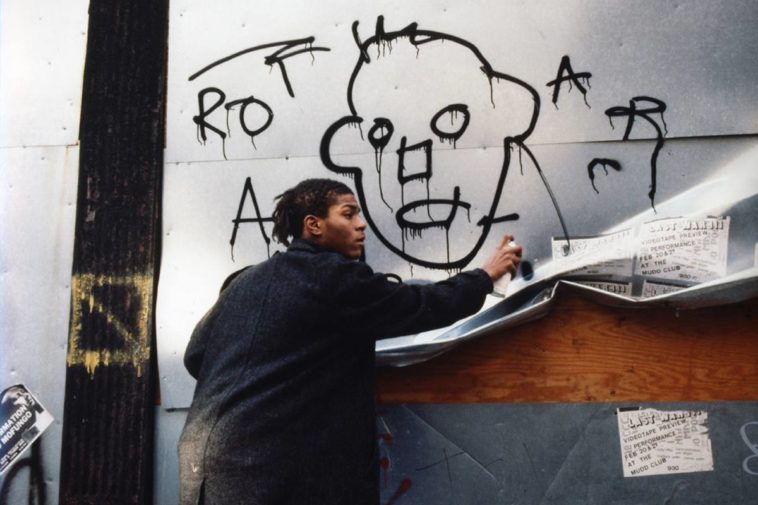The vast, dynamic canvas of New York City’s streets has played host to a diverse range of graffiti tags over the years. Among these tags, one that distinctly stands out from the late 1970s is the intriguingly-named SAMO©. The story behind this tag is as captivating as the artwork itself, weaving together elements of urban life, avant-garde art, and cultural resonance in the midst of New York City’s burgeoning street art scene.
Origins of SAMO©: The Initial Strokes
Originating between 1977 and the dawn of the 1980s, SAMO© wasn’t just any other tag scribbled on the walls by anonymous artists. It held within its strokes a unique combination of poetry, wit, sarcasm, and thought-provoking phrases. The very name “SAMO©” – pronounced “Same-Oh” – was often accompanied by these short, enigmatic phrases, providing onlookers a momentary pause, a break from the routine, and an invitation to delve deeper into their meanings.
At a surface glance, the incorporation of the copyright symbol in “SAMO©” might seem whimsical. But it was more than a mere playful addition. The copyright symbol conveyed a subtle dig at the commercialization of art and culture, suggesting that even in the underground world of street art, there existed a conscious awareness of mainstream art’s commodification.
Collaboration and the Artists Behind SAMO©
Though SAMO© is popularly and primarily associated with Jean-Michel Basquiat, a prodigious talent who later gained substantial recognition in the art world, the inception of SAMO© was not solely his brainchild. It was a creative synergy between Basquiat and Al Diaz. The duo, friends from their school days, brought together their shared experiences, artistic perspectives, and insights to birth the SAMO© phenomenon.
While the duo of Basquiat and Diaz was at the heart of the SAMO© movement, they weren’t working in isolation. Several of their friends, drawn by the same allure of street art and the desire to make a statement, contributed to the spreading of the SAMO© tag across downtown Manhattan.
The Art and Philosophy of SAMO©
The allure of SAMO© wasn’t just in its distinctive appearance, but in the philosophy it carried. The very term “SAMO”, suggestive of “same old”, could be seen as a commentary on the monotony of daily life, consumerism, or even the repetitive nature of popular culture. This was a time when New York City was undergoing significant socio-economic changes. The city’s decay was palpable, and yet, amidst this, there was an artistic renaissance brewing. SAMO©, in its essence, became a mirror reflecting the dualities of the time.
The tags often contained quips that were both poetic and sarcastic.
The Legacy and Impact of SAMO©
While the SAMO© tags were short-lived, fading away by the early 1980s, their impact was long-lasting. Jean-Michel Basquiat’s meteoric rise in the art world is well-documented. From the streets of Manhattan, he went on to collaborate with renowned artists, including Andy Warhol, and his artworks fetched astronomical prices in prestigious auctions.
But SAMO©’s legacy goes beyond just Basquiat’s personal success. It serves as a poignant reminder of a time when street art was not just an aesthetic choice but a form of resistance, a voice of the unheard, and a canvas for the city’s soul.
In modern times, when street art has gained significant recognition and has even been commercialized to some extent, the story of SAMO© forces us to remember its roots – as a raw, unfiltered commentary on society, crafted by artists who dared to see the world differently.
Conclusion
The streets of New York City have seen countless tags come and go, but few have left an indelible mark like SAMO©. Through its poetic sarcasm, artistic innovation, and cultural critique, it not only captured the essence of its era but also laid down a foundation for future artists to build upon. As we walk the streets today, amidst the modern murals and digital prints, somewhere the spirit of SAMO© still lingers, challenging us to see beyond the ordinary and to question the “same old” patterns of our existence.





